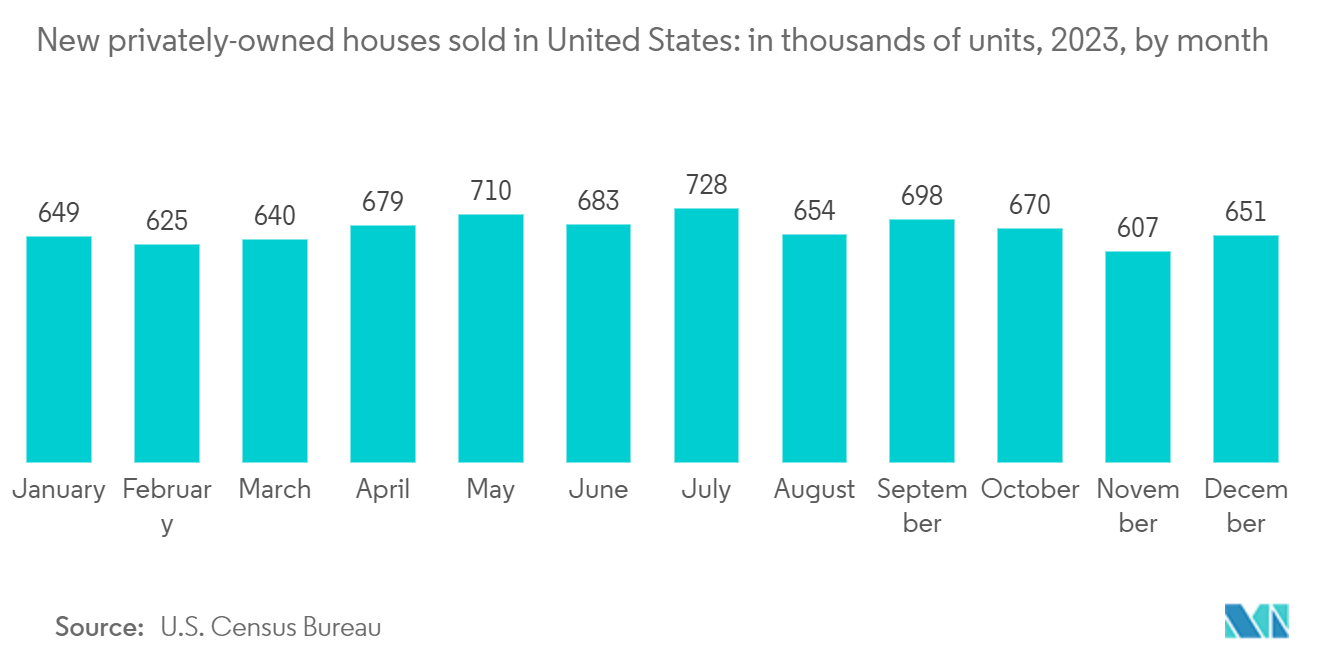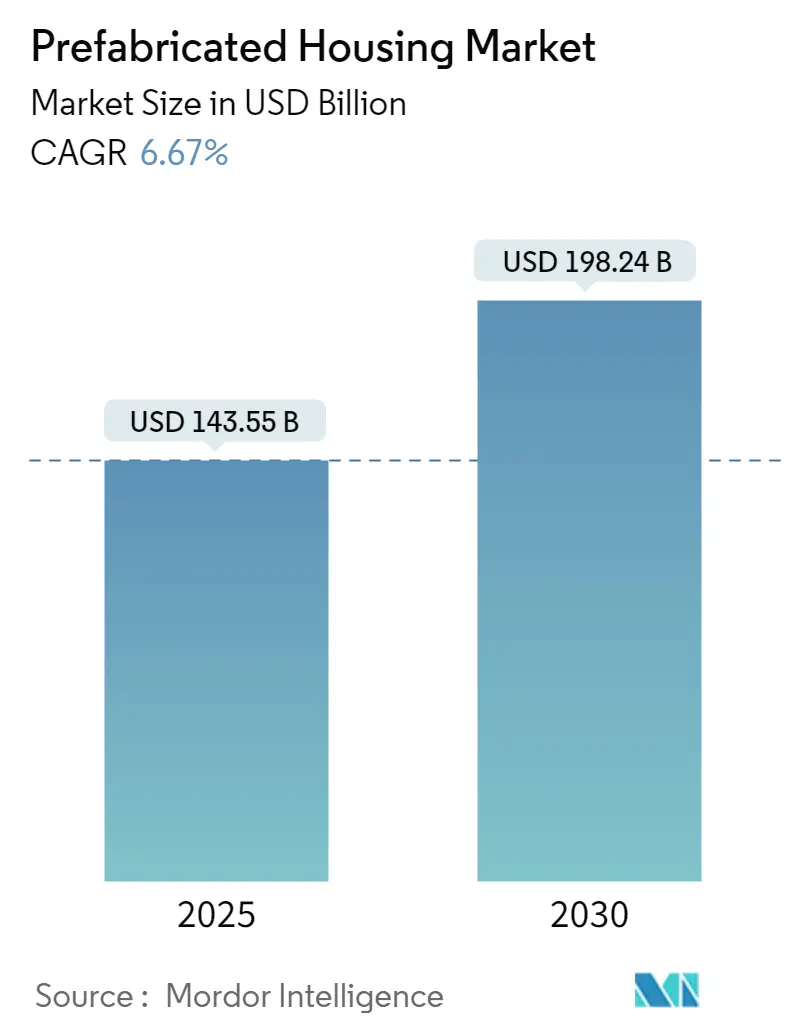
| Study Period | 2020 - 2030 |
| Market Size (2025) | USD 143.55 Billion |
| Market Size (2030) | USD 198.24 Billion |
| CAGR (2025 - 2030) | 6.67 % |
| Fastest Growing Market | Asia Pacific |
| Largest Market | Asia Pacific |
| Market Concentration | Low |
Major Players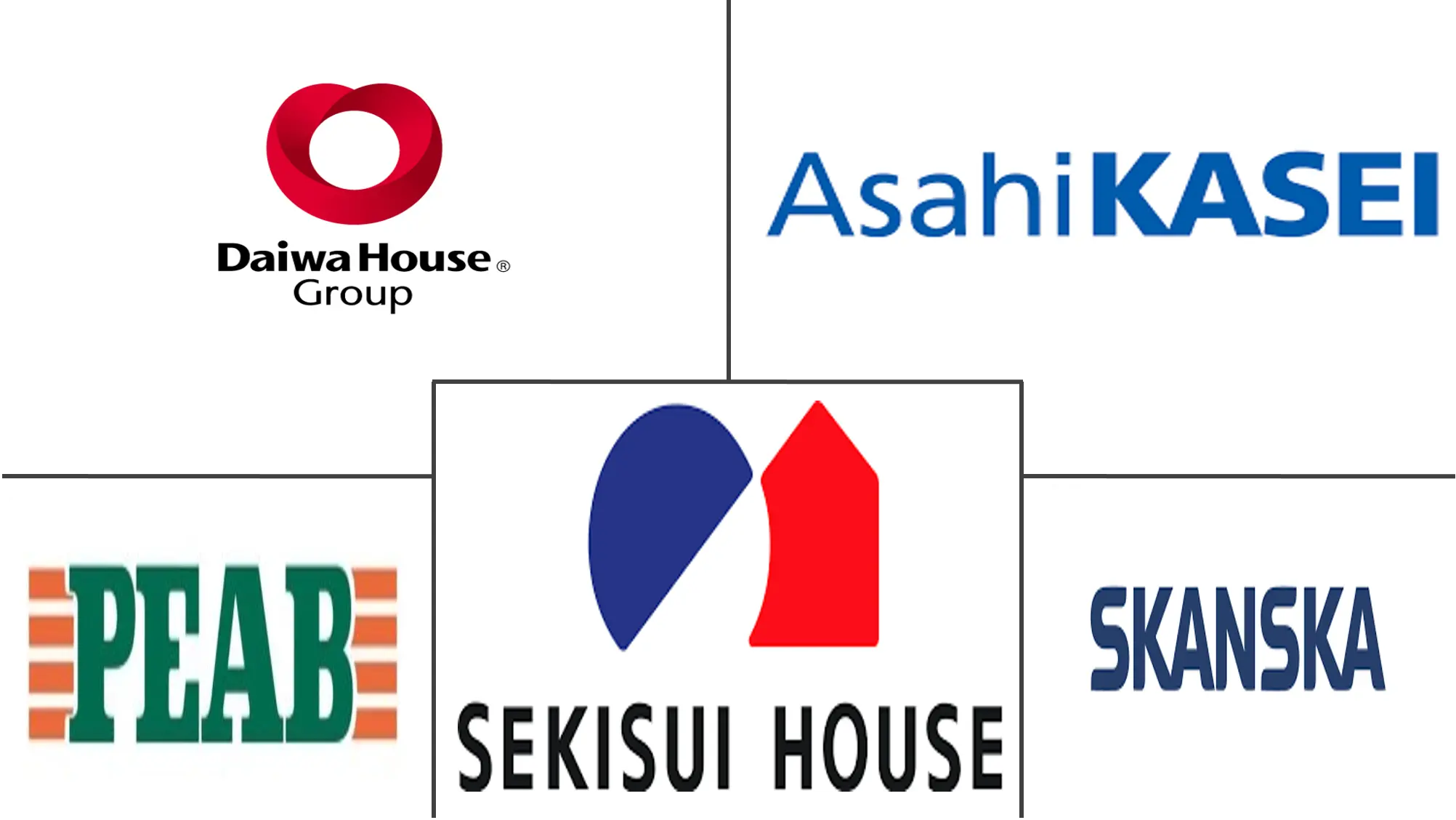
*Disclaimer: Major Players sorted in no particular order |
Prefabricated Housing Market Overview
The Prefabricated Housing Market size is estimated at USD 143.55 billion in 2025, and is expected to reach USD 198.24 billion by 2030, at a CAGR of 6.67% during the forecast period (2025-2030).
The construction industry has also seen delays in finishing projects due to labor shortages and a global supply deficit in several common building materials, including steel, paint, cement, wood, cabinets, and electrical components. Compared to before the pandemic, wait times for building materials have increased by at least double, and in some cases, by more than 10 times. Construction projects will experience completion delays and increased cost pressure due to the unfavorable weather affecting the US East Coast since the start of 2022.
The modular building market is expanding as demand rises, even though it accounts only for a small portion of the USD 1 trillion construction industry. Prefabrication is becoming increasingly popular because of its on-site effectiveness, increased worker productivity and safety, and cheaper construction costs. In addition to these advantages, modular construction offers fantastic prospects for more responsible use of building materials and environmentally friendly designs. It also marks a significant advancement in environmental sustainability.
Not all mobile houses are modular. According to industry experts, 80% of manufactured homes are still at the original location where they were first installed. A manufactured home can be moved for between USD 5,000 and 10,000 or even USD 20,000, depending on the distance, licenses and taxes, and the house size. The US Census Bureau estimates that there are about 7 million prefabricated homes in the country (7.5% of all single-family homes). It is good to see that more than 80% of contractors have already embraced off-site building techniques like modularization.
Due to various causes, including a tight labor market, rising input costs, and increased demand due to government incentives, the construction and building industries have experienced significant price inflation in most US states. However, the problems above are beginning to affect all types of construction. The rise in costs traditionally started in residential construction.
Despite falling demand for housing, Singapore's house prices are still rising. In the first quarter of 2023, national inflation-adjusted house prices increased by 5.59% from a year earlier, following a Y-o-Y increase of 2.05% in Q4 2022, 5.7% in Q3, 3.73% in Q2, and 2.22% in Q1. In the last quarter, real estate prices increased by 1.99% every quarter.
Prefabricated Housing Market Trends
Expansion Of Prefabricated Housing To Drive The Market
Prefabricated housing was once a temporary solution to a problem in recent history, but it soon turned into a long-term fix. Prefab houses are seeing a modern comeback throughout Europe, accounting for 23% of the country of Germany's housing stock. The UK construction company TopHat is growing and plans to create a massive factory the following year that can produce one modular home per hour.
In the United States, there is an apparent demand for more housing. According to industry reports, at the end of 2023, there was a shortage of around 3.2 million homes. The Great Recession caused a more than ten-year underproduction, accompanied by labor shortages and supply chain issues brought on by the pandemic. Experts predict that in the next five years, the United States will need to construct roughly 1.7 million new homes yearly to close the housing gap.
Humungous preference for project homes, mid-rise residential constructions, and public housing projects will steer the growth of the prefabricated housing industry in Europe. Massive demand is seen for one and two-family houses in countries such as Austria, Germany, Italy, Poland, Switzerland, the United Kingdom, and Scandinavia.
As evidenced by the increasing production of cross-laminated timber in Italy, there is also a growing prefabricated market for wood goods. As of 2022, in the DACH region, Germany, Austria, Switzerland, and the Czech Republic produced over 750,000 m3 of CLTs per year, while Italy is growing at an annual rate of 10%.
Legal & General Modular Homes, in particular, formed a strategic collaboration with affordable housing provider Vivid in December 2022, with plans to produce 1,000 prefabricated homes annually in the United Kingdom.
Governments' Investments And Plans In Residential Housing To Boost The Prefab Industry
The global value of assets amounted to USD 379.7 trillion at the end of 2022. The longer-term trend shows that, over the last three years, global property remained an essential source of wealth and is growing at 18.7%. The combined value of real estate is higher than equity or bond markets, which are nearly four times the size of global gross domestic product. The value of all the gold ever mined, USD 12.2 trillion, is paltry by comparison, a little over 3% of the value of global real estate.
In 2023, EPACK PREFAB, a manufacturer of pre-engineered building solutions, expanded its manufacturing footprint with an investment of INR 198 crore (USD 23.75 million) to set up a new facility spread over 25 acres in Andhra Pradesh.
PEB structures are used in many industries, including aviation, to construct small airports, stadiums, and commercial and residential projects. It has two manufacturing plants in Rajasthan and Greater Noida, with a total capacity to produce 1,00,000 metric tonnes of prefabricated material annually, which will increase to 200,000 metric tonnes with the third plant.
In Saudi Arabia, luxury resorts constructed under the Red Sea project will include prefabricated overwater and beach villas. Red Sea Global also reported 73 prefabricated villa units arriving at the site on January 23, 2023. The prefabricated construction market in Saudi Arabia will continue to be stimulated by the installation of these units.
In 2023, Plant Prefab, a construction technology company dedicated to sustainable design, materials, and operations, announced that it secured a follow-on equity investment of USD 2 million from Mexico-based structural steel fabricator TEMSA. The investment will bring the total amount raised by Plant Prefab from its recent Series C financing of USD 44 million, which is used to complete the company's first automated production facility and regional manufacturing center in Tejon Ranch, California. The 270,000 square feet of the Tejon Ranch Hub will support Plant Prefab's expansion into more significant multiunit and multifamily housing production, allowing it to serve the entire western United States.
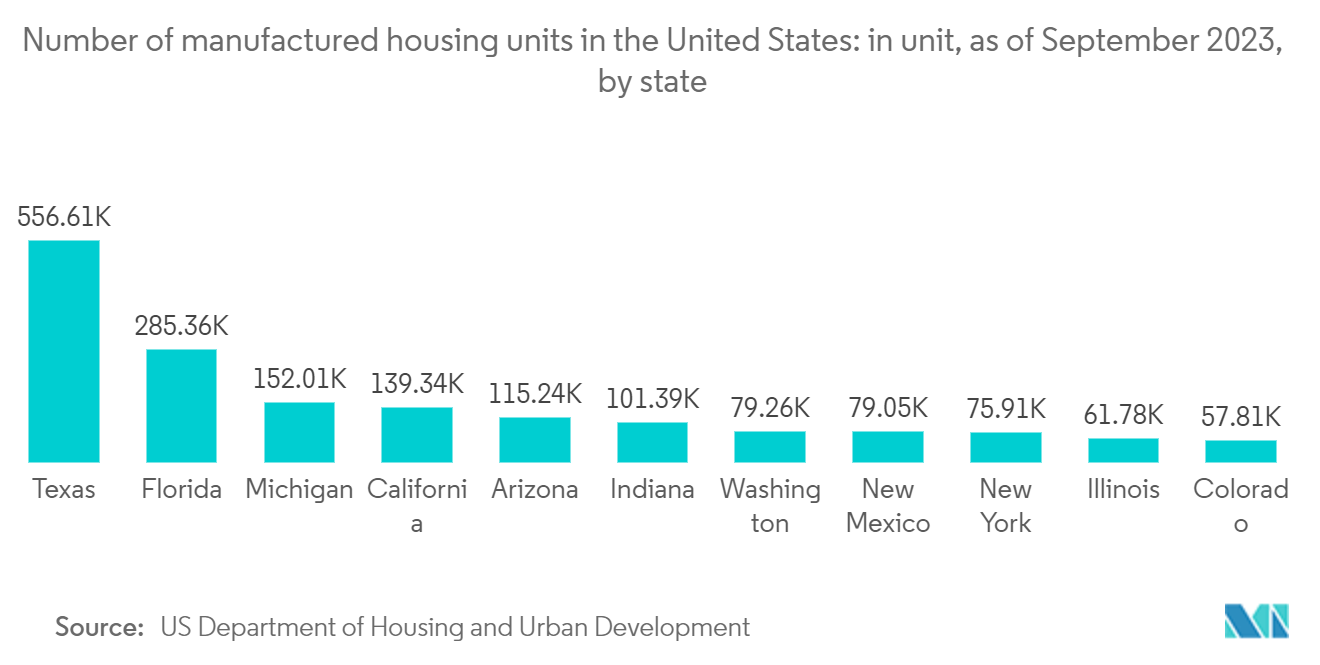
Prefabricated Housing Industry Overview
The global prefabricated housing market is fragmented and highly competitive without dominant players. Daiwa House Industry, Sekisui House, Asahi Kasei Corporation, Skanska AB, Peab AB, and many others are major players. Companies use environmentally friendly materials and manufacturing techniques to differentiate their products. Companies implement effective production technologies to minimize product costs and reduce related risks. Lofty capital requirements and rapid technical advancement are significant barriers to entry for new participants.
Prefabricated Housing Market Leaders
-
Daiwa House Industry
-
Sekisui House
-
Asahi Kasei Corporation
-
Skanska AB
-
Peab AB
- *Disclaimer: Major Players sorted in no particular order
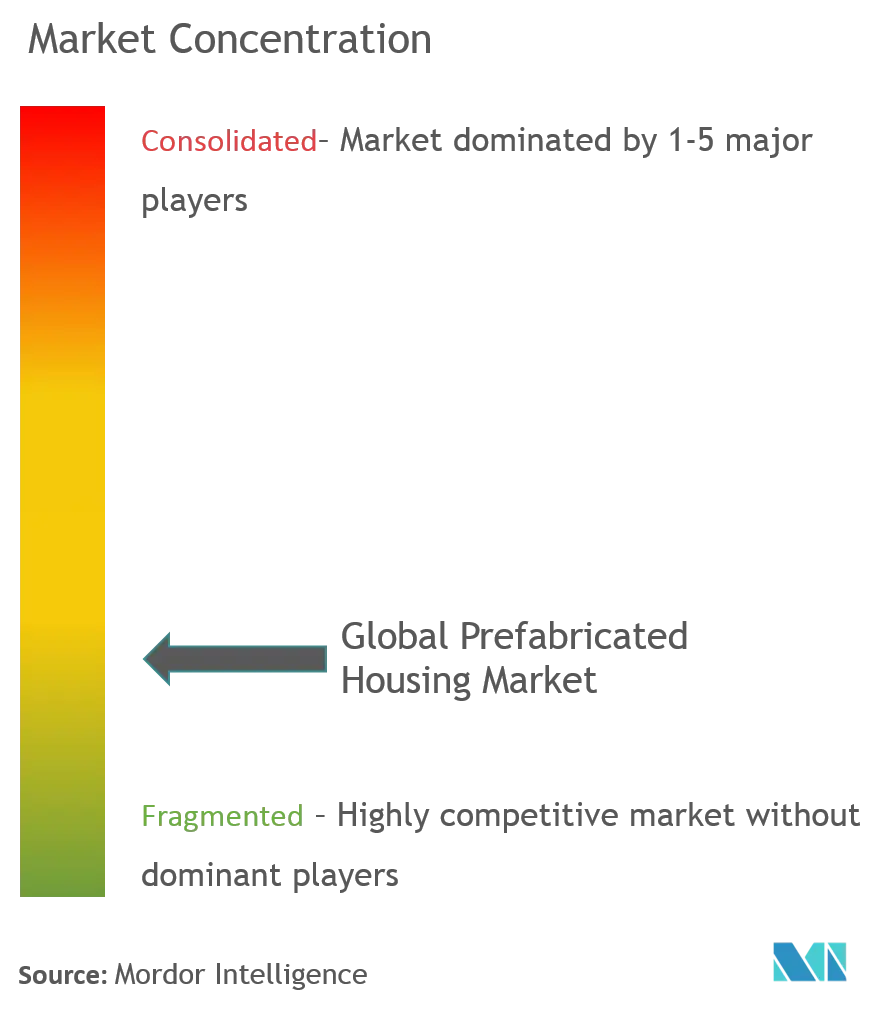
Prefabricated Housing Market News
October 2023: Lendlease and Daiwa House announced a new joint venture marking the start of construction. Lendlease, a global real estate group headquartered in Sydney, will develop and construct the new homes, which have an end value of circa GBP 250 million, and retain a 25% interest in the project, which will be the final stage of residential development at Elephant Park.
July 2023: Mastry Ventures and LENx, the venture subsidiary of Lennar, co-invested in Vessel Technologies' next-generation housing product. The Vessel System housing system will focus on reimagining apartment buildings as a consumer product by making them attractive, sustainable, and user-centered at affordable prices. It will achieve results by prefabricating wall and ceiling components in the Vessel's factory, which would cut costs and time as opposed to conventional construction methods.
Prefabricated Housing Industry Segmentation
Prefabrication is assembling components of a structure in a factory or other manufacturing site and transporting complete assemblies or sub-assemblies to the construction site. A comprehensive background analysis of the global prefabricated house market, including the assessment of the economy and contribution of sectors in the economy, market overview, market size estimation for key segments, and emerging trends in the market segments, market dynamics, and geographical trends, and COVID-19 impact, is covered in the report.
The global prefabricated house market is segmented by type (single-family and multi-family) and geography (North America, Asia-Pacific, Europe, GCC, and the Rest of the World). The report offers market size and forecasts for all the above segments in value (USD).
| By Type | Single Family |
| Multi Family | |
| By Geography | North America |
| Asia-Pacific | |
| Europe | |
| GCC | |
| Rest of the World |
Prefabricated Housing Market Research FAQs
How big is the Prefabricated Housing Market?
The Prefabricated Housing Market size is expected to reach USD 143.55 billion in 2025 and grow at a CAGR of 6.67% to reach USD 198.24 billion by 2030.
What is the current Prefabricated Housing Market size?
In 2025, the Prefabricated Housing Market size is expected to reach USD 143.55 billion.
Who are the key players in Prefabricated Housing Market?
Daiwa House Industry, Sekisui House, Asahi Kasei Corporation, Skanska AB and Peab AB are the major companies operating in the Prefabricated Housing Market.
Which is the fastest growing region in Prefabricated Housing Market?
Asia Pacific is estimated to grow at the highest CAGR over the forecast period (2025-2030).
Which region has the biggest share in Prefabricated Housing Market?
In 2025, the Asia Pacific accounts for the largest market share in Prefabricated Housing Market.
What years does this Prefabricated Housing Market cover, and what was the market size in 2024?
In 2024, the Prefabricated Housing Market size was estimated at USD 133.98 billion. The report covers the Prefabricated Housing Market historical market size for years: 2020, 2021, 2022, 2023 and 2024. The report also forecasts the Prefabricated Housing Market size for years: 2025, 2026, 2027, 2028, 2029 and 2030.
Our Best Selling Reports
Prefabricated Housing Industry Report
The prefabricated homes market, driven by prefab house manufacturers, is witnessing substantial growth due to the rising demand for home ownership in developing countries and the need for more efficient, cost-effective construction methods. Prefabricated homes, also known as modular homes, are built at one location by these manufacturers and then transported to their final destination. Key factors driving this market include the speed and affordability of building a prefabricated home, as well as the sustainable materials. The market is segmented by base material, type, and region, with steel-based prefabricated homes expected to see the highest demand. Similarly, the global prefabricated housing market, influenced by the work of prefab house manufacturers, is projected to experience significant growth. This growth is driven by an increase in construction activities and a growing awareness of eco-friendly, time-saving, and cost-effective construction practices. The market is segmented by home type, construction type, end-use, and region. The residential segment is the largest end-use market. Emerging trends in the market include the use of innovative materials by prefab house manufacturers to improve thermal properties and increase the strength of the building. This industry analysis, created by Mordor Intelligence™ Industry Reports, includes statistics for the Prefabricated Housing market share, size, and revenue growth rate, along with a market forecast outlook and historical overview. A sample of this industry analysis is available as a free report PDF download.



